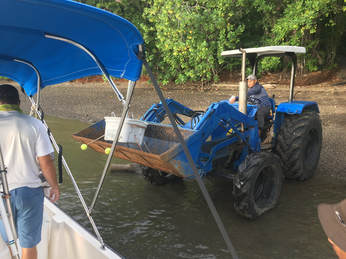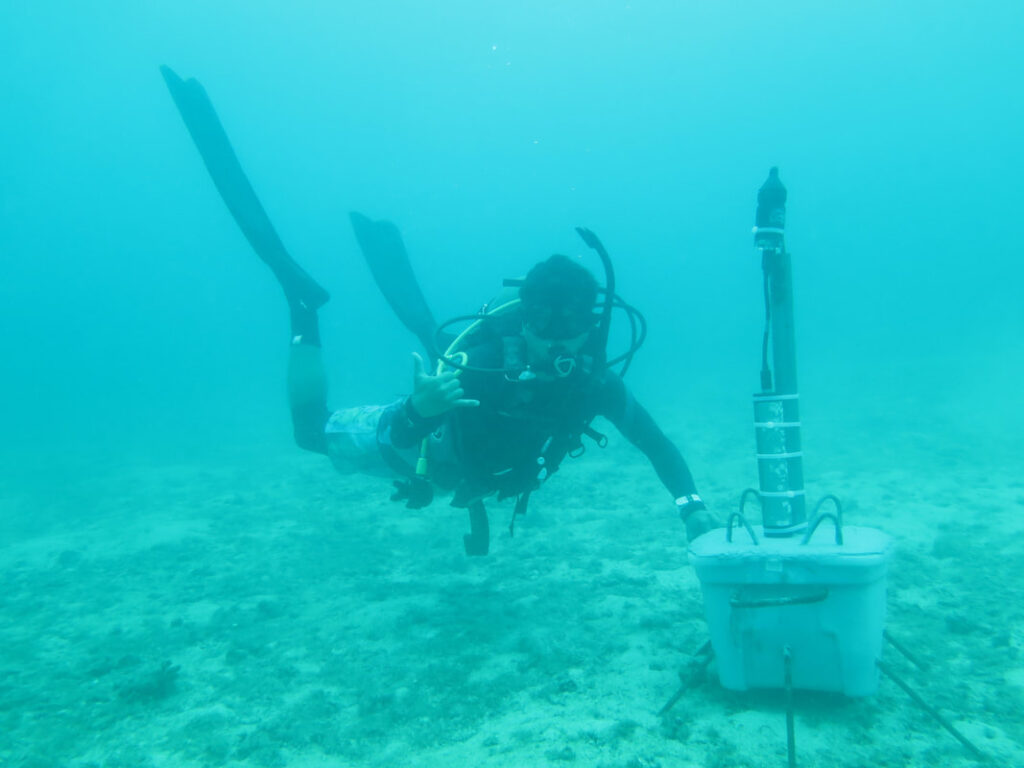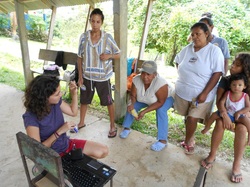A few days ago we were able to deploy our second bottom mounted hydrophone in the Gulf of Chiriqui. Last year we deployed one that recorded for two months, but this one will be able to record for up to 7 months. The hydrophone is programmed to record for 15 minutes every hour, and will be able to detect any male humpback whales that are singing in the area. Because whales from different populations sing different songs, these recordings will allow us to determine when humpback whales from the southern hemisphere leave, and when whales from the northern hemisphere arrive. This would be very difficult to do with boat observations only, so we are grateful to have this tool to help us monitor this population.






